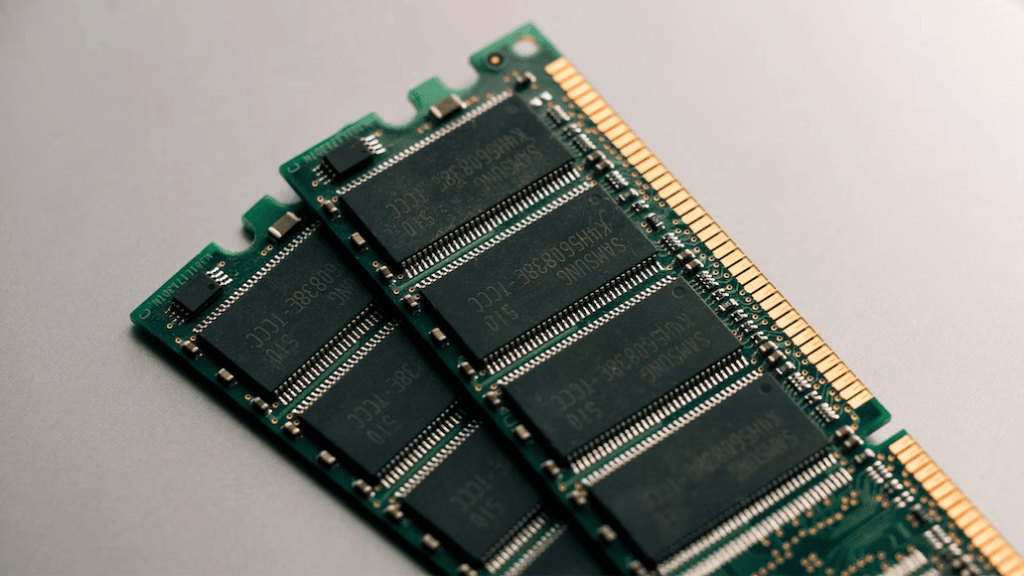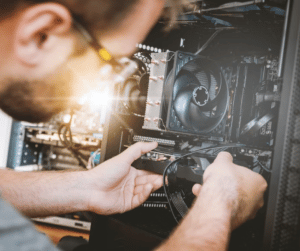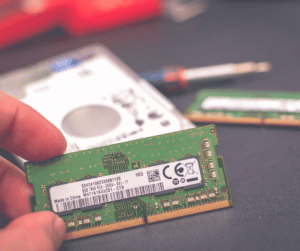
Random Access Memory (RAM) is a crucial component in any computer system. It serves as a temporary storage space for data that your computer’s CPU (Central Processing Unit) needs to access quickly. However, one common misconception among computer users is whether RAM requires drivers. In this comprehensive guide, we’ll explore the role of RAM, clarify the need for drivers, and provide insights into optimizing your computer’s memory for better performance.
Understanding RAM: The Basics
RAM is the short-term memory of your computer. It’s where data is temporarily stored while the CPU processes it. When you open applications or files, they are loaded into RAM to ensure quick access. As you open more programs or files, your RAM usage increases.
The Role of Drivers in Computers
Drivers are software programs that enable hardware components to communicate with the operating system. They act as intermediaries, facilitating the interaction between hardware and software. Common hardware components, such as graphics cards, network adapters, and printers, typically require drivers to function correctly.
RAM and Drivers: Debunking the Myth
One of the prevailing myths is that RAM needs drivers to operate. However, this is not the case. RAM is a hardware component that doesn’t require dedicated drivers because it doesn’t interact directly with software applications or the operating system in the same way as components like graphics cards or printers.
RAM operates at a low level, with its management and control handled by the computer’s BIOS (Basic Input/output System) and the operating system itself. When you start your computer, the BIOS initializes the RAM, making it accessible to the operating system and applications without the need for additional drivers.
What are the Benefits of Upgrading My RAM?
RAM, or random access memory, serves as the brain of your computer’s short-term memory. The RAM in your computer acts as a short-term storage area for information that it will need right now or soon. You won’t need to search through all of the information on your computer if you choose this strategy. Or, to put it another way, computers keep information in RAM for instant access.
A RAM upgrade is one option for enhancing the performance and speed of your computer. The more RAM your computer has, the quicker and more smoothly it operates. Your computer will boot up quicker, maintain the smooth operation of all open browser windows and applications, have a higher FPS (frames per second) when gaming, and be more responsive in general.
What is the Purpose of upgrading RAM?
An upgrade in RAM gives you the capabilities you need to temporarily transfer data from a hard drive to a central processing unit (CPU). Even the fastest solid-state discs (SSD) are slow in contrast to RAM’s performance. If you don’t have enough RAM, your computer will either be painfully sluggish or utterly useless depending on what you’re doing.
Making a computer run quicker is the most frequent justification for adding more RAM to it.
Make web browsing more efficient.
Their computers ought to be set up for gaming.
When using photos or videos, avoid system problems.
Give an outdated computer a new lease of life by recycling it.
Take note of how each of the aforementioned causes has a direct impact on how fast and powerful your PC may be. You would mostly want to increase RAM for this reason.
Exist any Dangers?
There are hazards associated with DIY RAM upgrades. There are numerous other reasons why you shouldn’t open your computer, in addition to the risk of damaging its delicate components. You can also be nullifying any manufacturer’s warranties that you may have.
Continue reading to discover the most important considerations to have in mind when it comes to increasing your RAM so that you will be well prepared.
Even if you don’t want to update your computer’s RAM, you may still improve its speed. The built-in cleaning and optimization capabilities of AVG Tune-up will help your computer run at its peak performance.
How can I Upgrade My Computer’s RAM?

You are now ready to perform a desktop memory upgrade since the required RAM has been installed. Here’s how to upgrade your desktop computer’s RAM:
Turn off your computer and give it time to cool entirely.
Make sure that every cable, wire, and accessory is unplugged.
Your computer’s casing should be removed. For comprehensive instructions, refer to the owner’s manual for your PC. Keep track of which screws go where since you will undoubtedly need to unscrew them. In terms of type and size, they could not all be the same.
Touch an unpainted metal surface on your computer to remove static electricity from your body. This will help shield the delicate inside parts of your computer from inadvertent damage.
your current RAM modules are slowly out. Move the RAM modules to the side if your computer uses clips to hold them in place. Additionally, it ought to raise the RAM module, making removal simpler.
Carefully place your new RAM modules into the RAM slot by pushing them in from the edge with the gold connections. Make sure the RAM module’s notch is properly positioned so it can slide all the way into the slot. Never touch the tops or the gold connections of your RAM modules; only the edges and borders may be touched!
Your computer’s casing has to be replaced.
All cables and connections should be reconnected.
How to Upgrade the RAM on My Laptop?

Is it feasible to upgrade a laptop’s RAM? Yes, provided that you haven’t gone over your system’s maximum RAM limit. The amount of RAM your laptop can manage is influenced by the same variables that determine how much RAM your desktop computer can take.
Furthermore, certain laptops might not be compatible with RAM upgrades at all. On rare occasions, RAM modules are directly soldered to the motherboard, making them immovable. To find out if the RAM in your laptop can be changed, visit the manufacturer’s website.
If your laptop has the ability to install more RAM, the process is as follows:
Your laptop should be shut off, and given some time to cool.
Make sure that every cable, wire, and accessory is unplugged.
On your work surface, it should now be lying face-down.
Remove the portion of the shell that covers your RAM or the bottom casing. The details below will change depending on the type of laptop you own.
Keep track of which screws go into which holes if you need to disassemble the case since screw sizes vary.
Touch an unpainted metal surface on your laptop to release static electricity from your body. This protects your laptop’s delicate internal components.
Carefully separate the clips holding your current RAM modules in place. Each RAM module should pop up and out at an angle. Then you may take it out of the RAM slot.
Grab the corners or edges of your brand-new RAM modules. Stay away from touching anything attached to the top of the module, especially the gold connectors!
Driver Updates for your PC: when should you do them?
Windows and other software programs may interface with hardware devices thanks to drivers, which are software programs. You must have a driver installed on your computer for your video card in order to use all of its features. Similar to computer software, drivers include updates and service packs to fix faults and bring new capabilities.
If a device is giving you trouble, you might want to update the drivers. The most recent iteration of your computer’s drivers is not a magical speed booster that negates the requirement to update a sluggish PC.
A driver upgrade often only brings small performance gains and bug fixes that are applicable to a constrained set of use cases and hardware setups. In general, if your PC is in good working order and you don’t want to risk damaging anything, you may forgo driver updates.
There is, of course, a significant exception to this rule. If you want to get the most performance out of your system, make sure your video card drivers, chipset, networking, and sound card drivers are updated using the manufacturer’s drivers. Using the official NVidia or ATI/AMD drivers can significantly improve performance if your visual card has a built-in Windows driver.
Can I add drivers to my RAM for better performance?
No, you cannot add drivers to RAM. RAM operates at a lower level and doesn’t require drivers. Performance improvements come from upgrading or optimizing your existing RAM.
Do I need to update my RAM like I update drivers for other components?
No, RAM doesn’t require driver updates. However, keeping your operating system and drivers up to date can indirectly impact RAM performance.
Can faulty RAM be fixed with drivers?
No, faulty RAM cannot be fixed with drivers. Faulty RAM modules may need to be replaced to resolve issues.
Conclusion
In summary, RAM is a fundamental component of your computer that doesn’t require dedicated drivers. While drivers play a crucial role in the functioning of many hardware components, RAM operates differently. Instead of focusing on drivers, users should consider upgrading or optimizing their RAM for better performance. Understanding the role of RAM in your computer can help you make informed decisions about your system’s memory needs.
Related Articles:
What is XHCI hand-off On your PC. Should you enable it?
